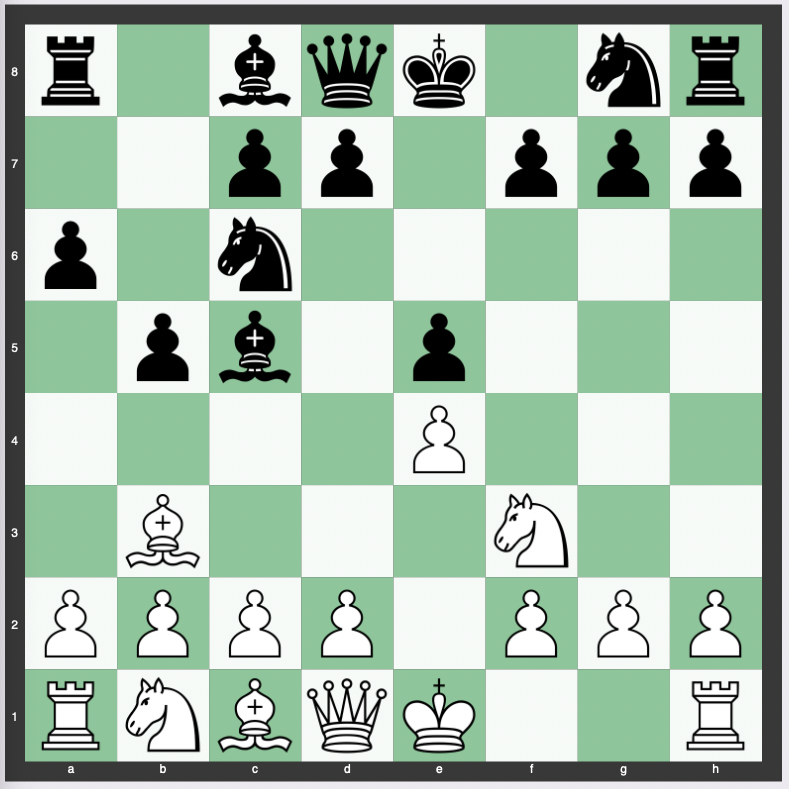The Graz Defense, a particular line within the Ruy Lopez, is a fascinating and intricate opening that promises a rich, strategic game for both white and black.
Below we look into the nitty-gritty of the Graz Defense, exploring its key aspects such as move order, theory, strategy, and purpose, variations, history, its suitability for beginners and intermediates, and its prevalence at the grandmaster level.
Move Order of the Graz Defense
The move order of the Graz Defense is characterized by a sequence of moves that intends to control the center and disrupt white’s typical strategies within the Ruy-Lopez.
The initial moves are 1. e4 e5 2. Nf3 Nc6 3. Bb5.
This is standard for the Ruy-Lopez opening, a classic opening that has been used for centuries in chess.
The divergence into the Graz Defense happens when black plays a6 (Morphy Defense), followed by b5, forcing the white bishop to retreat to a4.
After that, black develops their bishop to c5.

Theory, Strategy and Purpose of the Graz Defense
The Graz Defense offers an interesting blend of offensive and defensive opportunities for both sides.
The strategy revolves around creating imbalances in the position and using these to exploit tactical opportunities.
Black’s aggressive pawn pushes on the queen’s side with a6 and b5 are aimed at challenging white’s control over the center and provoking white into committing to a particular pawn structure.
The placement of the bishop on c5 not only develops a piece but also indirectly applies pressure on the f2 square, which could be a potential target later on.
Variations of the Graz Defense
In response to the Graz Defense, there are several variations white can opt for.
Some players prefer to solidify their position with c3, preparing to push d4 and gain central space.
Another common option is to go for d3, aiming for a slower, more maneuvering game, keeping the pawn structure flexible.
A more aggressive alternative is castling kingside, preparing for a possible pawn storm in the center or on the kingside.
History of the Graz Defense
The Graz Defense, while not as frequently played as other variations in the Ruy-Lopez, has a rich history and has been used in a number of high-level games.
Its roots can be traced back to the mid-19th century when strategic understanding of the game was evolving.
It was named after the Austrian city of Graz, where it was first popularized.
The Graz Defense has been employed by many top players over the years, adding to its intrigue and depth of theory.
Is the Graz Defense Good for Beginners or Intermediates?
For beginners, the Graz Defense can serve as an excellent introduction to the complexities of chess strategy.
It offers a variety of strategic and tactical themes like pawn structure manipulation, piece development, center control, and tactical threats.
However, some of its lines can be quite complex and may require a decent understanding of chess principles.
Intermediate players can greatly benefit from the Graz Defense, as it provides a springboard for deep strategic planning and tactical calculations.
It is a flexible opening that allows for a wide range of middlegame plans and can adapt to various styles of play.
How Often Is the Graz Defense Played at the Grandmaster Level?
While the Graz Defense is not as popular as other mainstream openings within the Ruy Lopez, it has seen its fair share of grandmaster play.
Some grandmasters appreciate the unique and rich positions that it offers, adding it to their repertoire to surprise opponents or to use in specific tournament situations.
Ruy Lopez: Morphy Defense: Graz variation
Conclusion
In essence, the Graz Defense, a fascinating variation of the Ruy-Lopez, promises a wealth of strategic and tactical opportunities for both sides of the board.
Its unique move order, underlying theory and strategy, various lines of play, and historical significance make it an enriching study for chess enthusiasts of all levels.
Whether you’re a beginner seeking to expand your understanding of chess or an intermediate player looking for complex, rich positions, the Graz Defense could offer just the kind of game you’re looking for.


